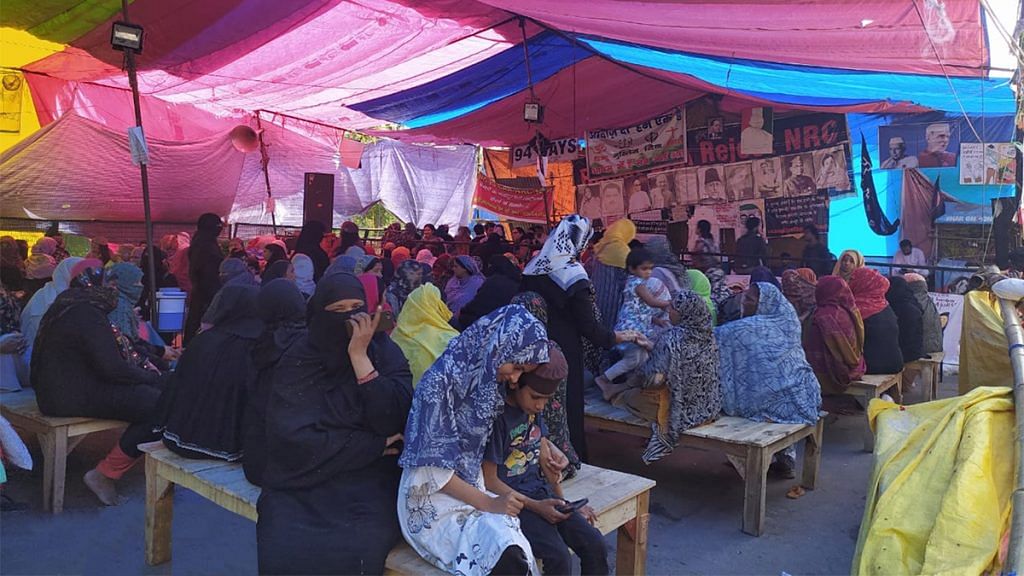New Delhi: Protestors at Shaheen Bagh continue to refuse to evacuate the site even as concerns of their vulnerability to the coronavirus pandemic grow. However, organisers say they have come up with “innovative measures to practice precaution”.
“At the entrance of the sit-in, there are volunteers who have been made to stand with sanitisers to individually sanitise each protester,” Mohammad Khushnoor, a doctor at a medical camp set up at the site told ThePrint.
“Anyone with any flu symptoms — cold, cough or fever — is being asked to leave. In fact, we are giving them masks and asking them to go to government hospitals which are testing for coronavirus,” Dr Khushnoor added.
The organisers have also arranged wide wooden benches at the protest site which accommodates three to four women. The benches have been placed one meter apart, an organiser told ThePrint.
“We are also actively discouraging older women and children from coming to the protest site. We have been announcing that anyone who isn’t feeling well shouldn’t be at the protest,” Khurshid Alam, one of the organisers told ThePrint.
Since mid-December, when the protest began, women sat on the ground demanding a rollback of the Citizenship Amendment Act (CAA) and talks with the government. Their 24X7 protest continued through the worst of the winter’s nights, the rain, and even last month’s communal riots in Northeast Delhi. At any given time, at least 150 people would be present, raising slogans of ‘azaadi‘ (freedom), discussing the issue of CAA, National Population Register (NPR) and National Register of Citizens (NRC), or simply sitting in solidarity.
Also read: There’s fear, grief and dejection after Delhi riots but Shaheen Bagh resolves to protest on
A change, but not enough
The new measures to thin the crowd come after Delhi Chief Minister Arvind Kejriwal announced that any gathering of over 50 people will not be allowed in the national capital, which has seen one coronavirus fatality. There are currently 10 active cases of infection in Delhi; two cases recovered in the past week.
However, despite the new arrangement, the Shaheen Bagh protest site typically has more than 50 people at any given time.
“There is a significant reduction in how many protesters are being accommodated at the site. There are around 100 protesters in total,” said Alam.
The medical camp volunteers have also been making announcements about how to practice precaution.
“The protesters are being asked to wash all their clothing in hot water when they return home at the end of every day,” Dr. Khushnoor said.
On Tuesday, police officials met with some of the protestors to try and convince them to evacuate the site. But their efforts failed.
“They met some of the women at the barricades, but the women were persistent that if the police has to make any announcements, or negotiate with the people, they must come to the stage and talk,” Alam said.
Several public figures have also called for the Shaheen Bagh protest to end in the wake of the pandemic.
While the global number of cases has touched nearly 2 lakh infections, the number of active cases in India rose to 147 Wednesday. At least three people have died, including the Delhi fatality, while 14 people have recovered. In the past 10 days, at least one new case a day has been reported on average.
Also read: Army reports first coronavirus case, cancels training and events to prevent outbreak
